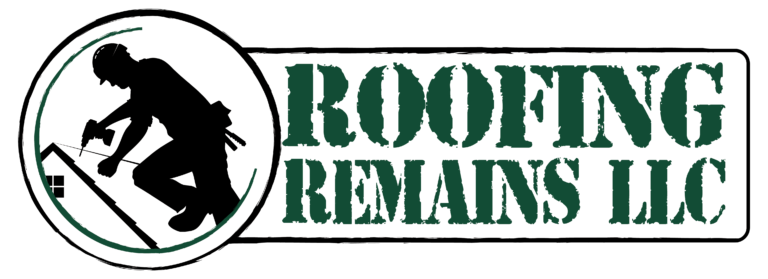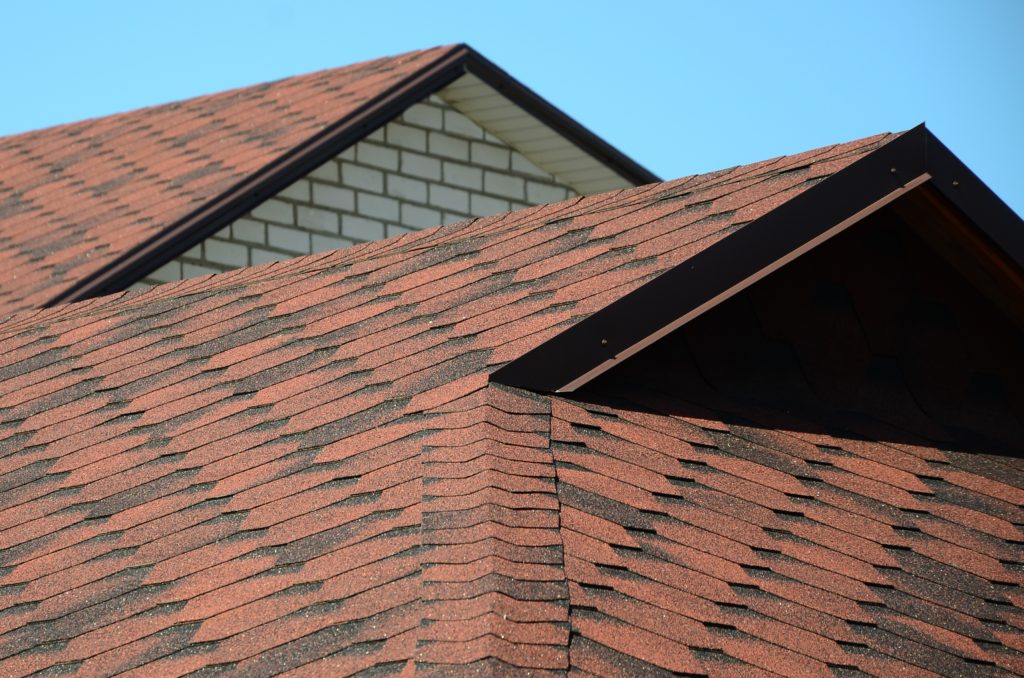
What Are Shingles Made Of?
Drive through a trendy neighborhood, and you won’t see wattle and daub huts. These huts were constructed with vertical wooden stakes and woven with horizontal twigs and branches. Clay and mud were then used to help secure the woven pieces and to keep the draft out.
All the efforts were used to help keep the weather out and people warm and dry. Other roofing materials were animal parts, wood, rocks, and clay.
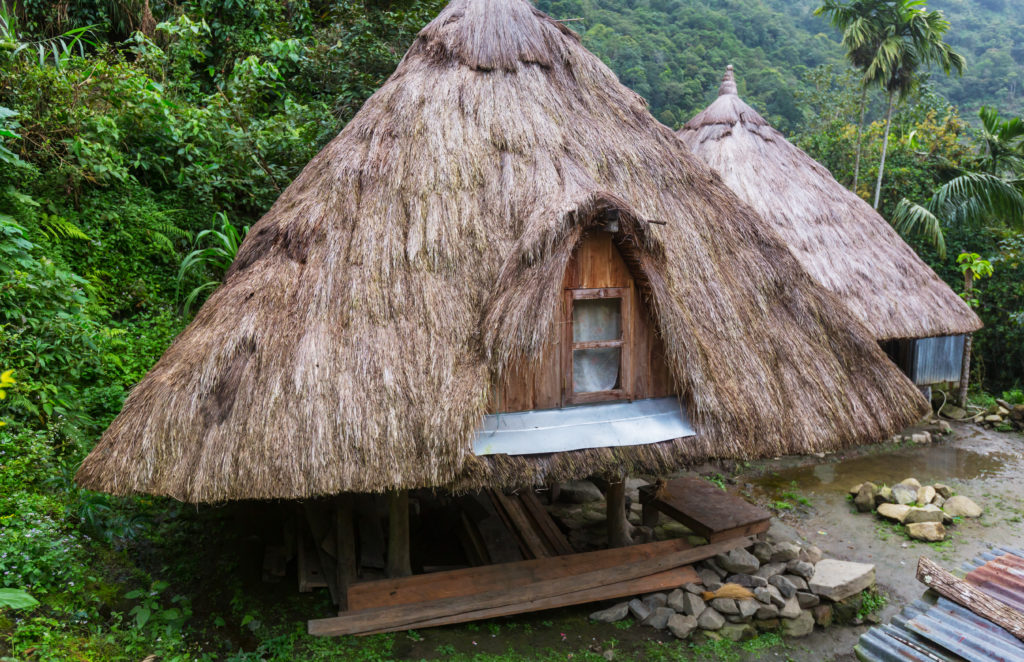
All the efforts were used to help keep the weather out and people warm and dry. Other roofing materials were animal parts, wood, rocks, and clay.
Today roofing materials have advanced, and asphalt roofing shingles are used about 75% of the time in North American homes to keep homes weathertight for decades.
Weather Resistance History
Asphalt roofing shingles were first used in 1901, and by 1939 11 million squares of shingles were used. The production of shingles grew after the U.S. National Board of Fire Underwriters ran a campaign to illuminate the use of wood shingles.
Asphalt shingles were constructed of “felt” or cotton rag until the 1920s. Cotton rags began to be increasingly expensive, so alternative products like wool, jute, manila, and wood pulp were used in the manufacturing process.
In 1926 there were twenty-two different types of experimental felt that were tested by the Asphalt Shingle and Research Institute with the National Bureau of Standards. The tests revealed virtually no difference in the products used or their performance.
By 1950 self-sealing and manually applied adhesives started being used to help prevent wind damage. Adhesives had to remain self-sealing at 140 degrees Fahrenheit for sixteen hours.
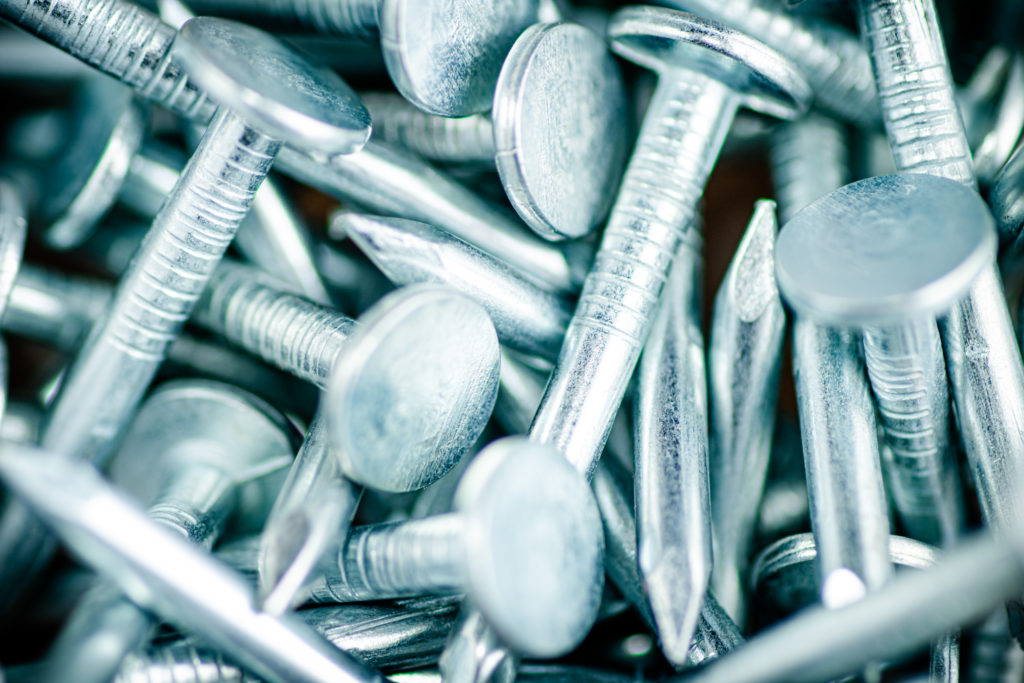
From Roofing Nails to Roofing Staples
Generally, up until this time, roofing nails were used. Three-quarter-inch staples were introduced and demonstrated that they could perform as well as nails, and six staples could do the same as four names.
In 1960 fiberglass mat bases were implemented but didn’t do well during freezing temperatures and the lighter flexible shingles were prone to wind damage. From 1907 asbestos became a prime roofing material additive for making shingles based on an asbestos-asphalt blend. If your house was made before 1980, there could be a chance that your roof shingles could contain asbestos.
Asbestos Shingle Layers
Determining the age of your home will help determine if you have asbestos shingles. Buildings built between 1920 and the 1980s used these shingles, and older sheds, barns, and lower-income housing used asbestos cement shingles.
By the late 1920s, the connection between asbestos production and illness such as lung cancer, pulmonary disease, and mesothelioma was practically undeniable.
Various factory workers were stricken with chronic inflammation of the lungs, thought to be due to the dusty conditions of the plants. The larger factories turned a blind eye to the occupational hazards.
In the 1950s, a safer alternative for roofing shingles. Although asbestos-based roofing shingles and siding were still available, the Federal government banned the product in 1989.
Later generations of shingles used fiberglass in place of asbestos, and the fiberglass provided acceptable durability, wind resistance, and fire resistance for fireproofing a building.
There are two different foundations used in the production of asphalt roofing shingles, organic and fiberglass.
Organic Shingles
Both are made similarly with an asphalt base covered on one or both sides with asphalt or modified asphalt to expose a surface impregnated with slate, quartz, glazed brick, stone, stone granules, or ceramic granules. The surface was treated with mineral powder, sand, talc, or mica to prevent shingles from sticking to one another before use.
Darker top surfaces like stone granule surfacing blot ultraviolet light, which causes the shingles to hold heat, and lighter shingles help with heat reflectivity in hot and sunny climates.
Organic shingles are produced from a foundation made of organic components such as waste paper, cellulose, wood fiber, or other plastics. To make it waterproof, this is saturated with asphalt; then, a top asphalt coating is applied, covered with strong granules.
These shingles will have about 40% more asphalt per square inch than shingles made from fiberglass. The organic core makes this type of shingles more prone to fire damage. They are more durable in cold weather. The wood versions were difficult to tear.
Fiberglass Shingles
Fiberglass reinforcement in organic mat shingles was designed as a substitute for asbestos. Fiberglass shingles have a base layer of urea-formaldehyde resin-bonded glass fiber mat made of moist, random-laid glass fibers.
To make these shingles waterproof, the mat is then covered with asphalt containing mineral fillers. These shingles are fire resistant, and they started replacing organic felt shingles.
Shingles are made of organic material or fiberglass, and they come in different styles
There are three major categories of asphalt roofing shingle products available today: strip shingles, dimensional shingles, and luxury shingles.
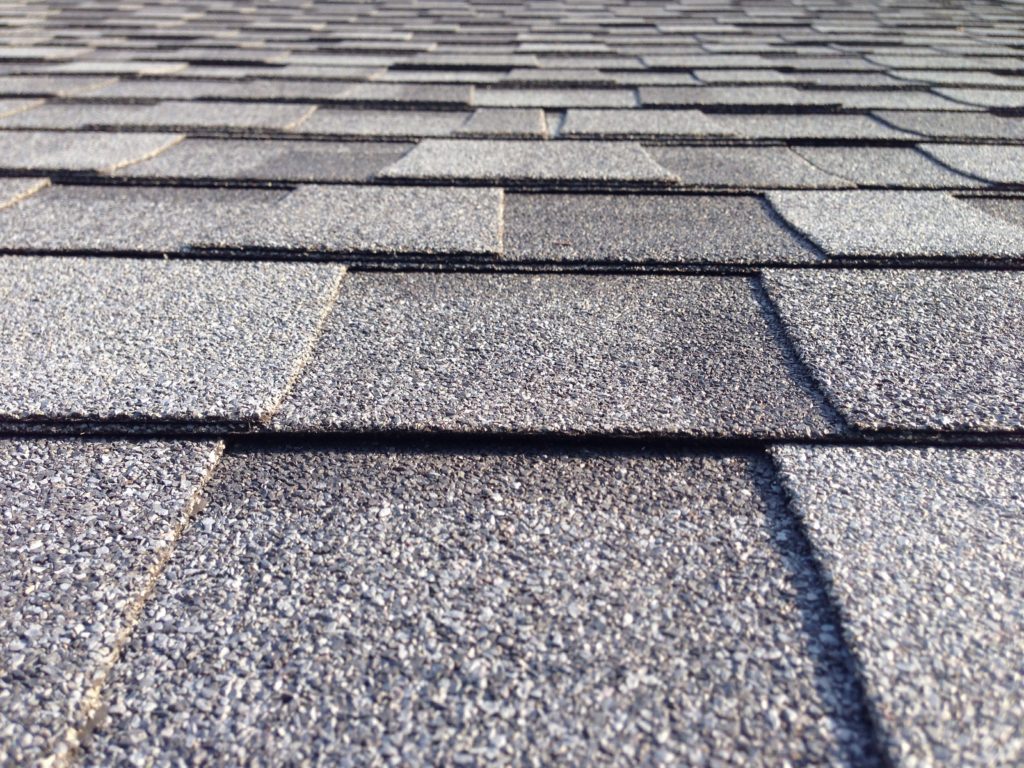
Strip Shingles
Strip Shingles are the most basic types of shingles. They are also known as 3-tab shingles. They are flat in appearance and look like slate. They are made from a single layer, typically cost less, and are less to install. Before 1980, strip shingles were mainly used by home builders that built inexpensive homes. Three-tab shingles use fewer materials and are smaller than an Architectural Shingle. Three-tab shingles typically cost less, and the installation labor is lower. These three-tab shingles last about 15-18 years.
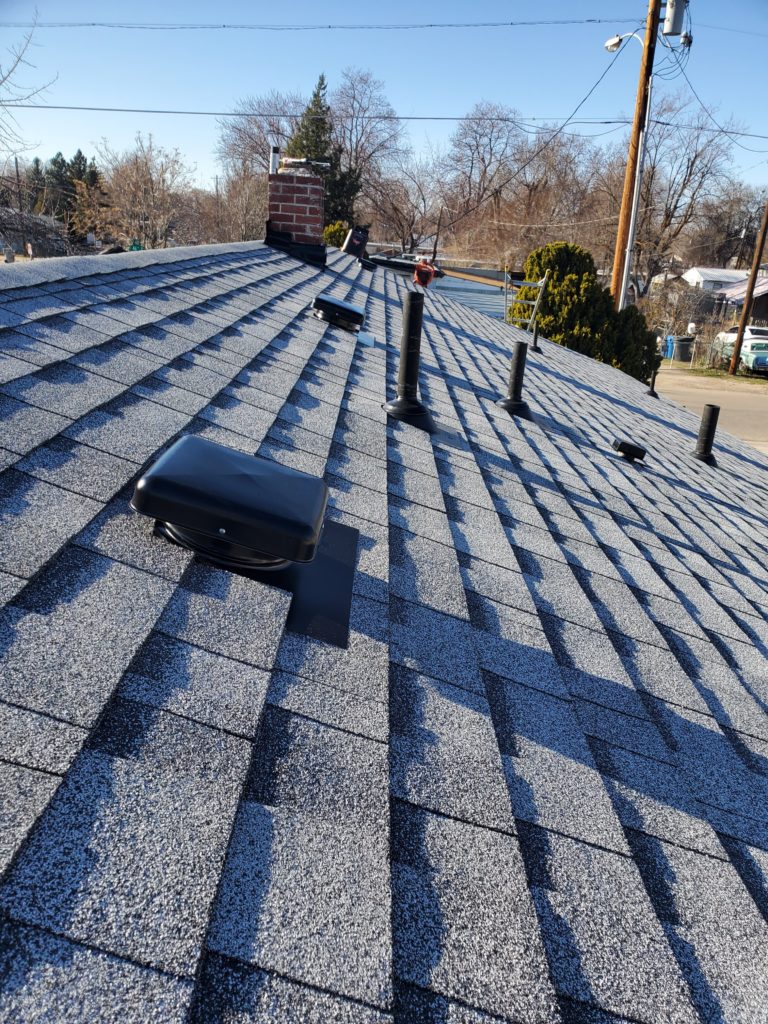
Architectural or Dimensional Shingles
Architectural or laminated shingles are also called dimensional shingles. They have two or more layers fused for a thicker multi-layer appearance. They are similar to a wood shake and natural slate roofing aesthetics. Dimensional or architectural shingles are thicker and more robust, differ in form and size, and give more esthetic value, casting more unique, random shadow lines. They can mimic the appearance of traditional wood and shake shingles. They are more expensive but last 24-30 years.
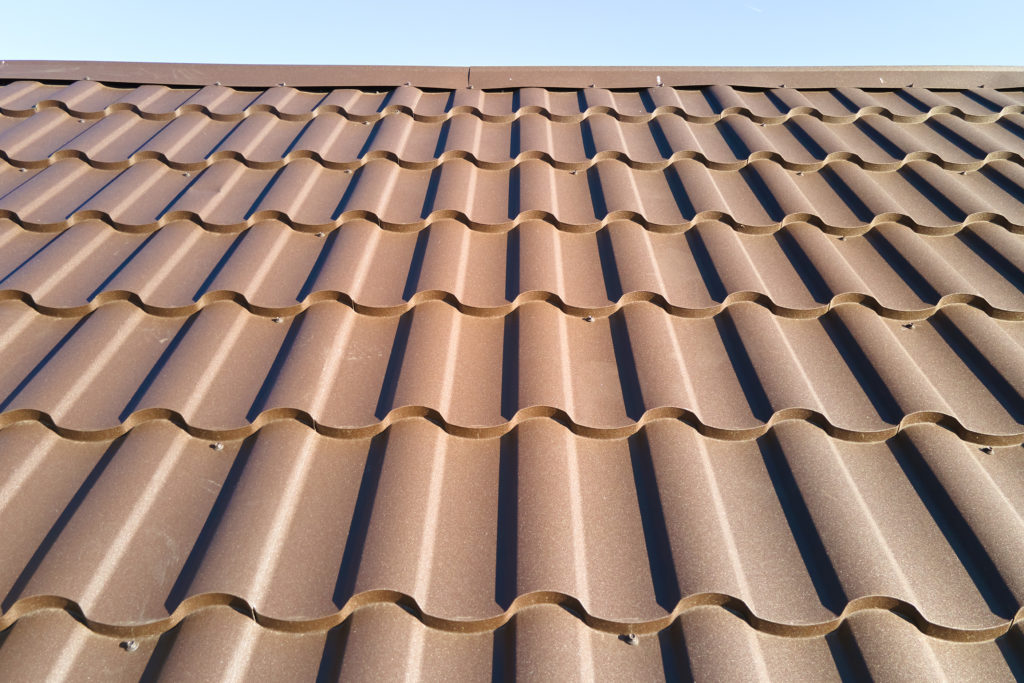
Luxury Shingles
Luxury Shingles are the highest-quality laminated shingles available. They offer a heavy-weight shingle that provides superior protection against weathering, esthetics, coloration, and dimensionality.
Roofing Remains, LLC
When it comes to your Roofing System, there are crucial components on every part of the roof which cannot be overlooked. At Roofing Remains, they are committed to every aspect of the build and/or scenario. Whether you’re doing a Re-Roof or a Roof Repair, it is essential to choose a Local Trusted contractor with years of experience.
They gladly serve the Treasure Valley from Boise, Idaho, to Meridian, Idaho, to Nampa, Idaho, and further. They are experts who have a tide and actual installation process whether you are installing Architectural Shingles, Standing Seam Vs. Tuff Ribb Metal, TPO, EPDM, Torch Down peel & Stick Flat Roofing Residential/Commercial Projects.
Give them a call, and let us draw out your entire roofing system today!
